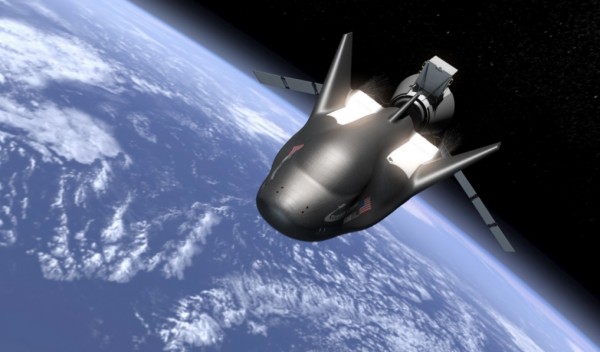By Ana Verayo, | January 16, 2016

Sierra Nevada's Dream Chaser space plane is the next generation spacecraft after NASA's Space Shuttle.
NASA just announced the contract winners who will provide cargo supply service to the International Space Station beginning 2019 until 2024.
Like Us on Facebook
Private space companies SpaceX, Orbital ATK and Sierra Nevada Corporation along with Sierra Nevada's Dream Chaser spacecraft will be flying cargo missions to lower Earth orbit, to the orbiting space laboratory. Dream Chaser will be the next generation reusable space plane, after NASA's Space Shuttle.
Sierra Nevada revealed in a tweet that they are proud to be selected as the next commercial resupply service provider for NASA and the ISS, shortly after the announcement on Thursday afternoon.
According to chief scientist for NASA's ISS, Julie Robinson, the Dream Chaser will be most valuable to deliver fragile science experiments via runway landings returning to Earth from the ISS. She also adds that this soft landing will be a really nice capability in addition the suite of things already in hand.
Under these contract terms, each space company should be able to fulfill and complete at least six space missions to the space station. According to Kirk Shireman who is the ISS Program Manager at NASA's Johnson Space Center, there will be a minimum of six missions from every private space company to the ISS, which will be most likely to exceed 18 flights.
This second contract involves NASA's Commercial Resupply Services 2 (CRS-2), collaborating with private space companies to deliver cargo supplies to the ISS. The first round of commercial resupply contracts was given in 2008, signalling the end of the Space Shuttle missions.
The first commercial cargo space flight was launched in 2012 by SpaceX, one year after retiring the Space Shuttle. Apart from SpaceX, Orbital Sciences already started flying out missions under the CRS-1 contracts, where both space companies also experienced failed missions, ending in launch failures leading to explosions. Ever since last year, Orbital Sciences made a merger with ATK in order to form Orbital ATK.
Valued at a maximum worth of US $14 billion, NASA officials believe that the CRS-2 contracts will not reach that number at this stage, as the mix of flights that they are looking for are nowhere near that value, adds Shireman.
Shireman also says that NASA was not able to disclose a contract value for each CRS-2 partner, stating that NASA also needs a great deal of flexibility when it comes to their cargo resupply missions. He adds that the missions can be done in groupings or a la carte, which makes it impossible to provide a specific price at the moment.
When asked about the untimely departure of Boeing from the previous competition last year and the other contenders, Shireman provided no comment. The first CRS-2 mission is slated to launch in late 2019.
-
Use of Coronavirus Pandemic Drones Raises Privacy Concerns: Drones Spread Fear, Local Officials Say

-
Coronavirus Hampers The Delivery Of Lockheed Martin F-35 Stealth Fighters For 2020

-
Instagram Speeds Up Plans to Add Account Memorialization Feature Due to COVID-19 Deaths

-
NASA: Perseverance Plans to Bring 'Mars Rock' to Earth in 2031

-
600 Dead And 3,000 In The Hospital as Iranians Believed Drinking High-Concentrations of Alcohol Can Cure The Coronavirus

-
600 Dead And 3,000 In The Hospital as Iranians Believed Drinking High-Concentrations of Alcohol Can Cure The Coronavirus

-
COVID-19: Doctors, Nurses Use Virtual Reality to Learn New Skills in Treating Coronavirus Patients







